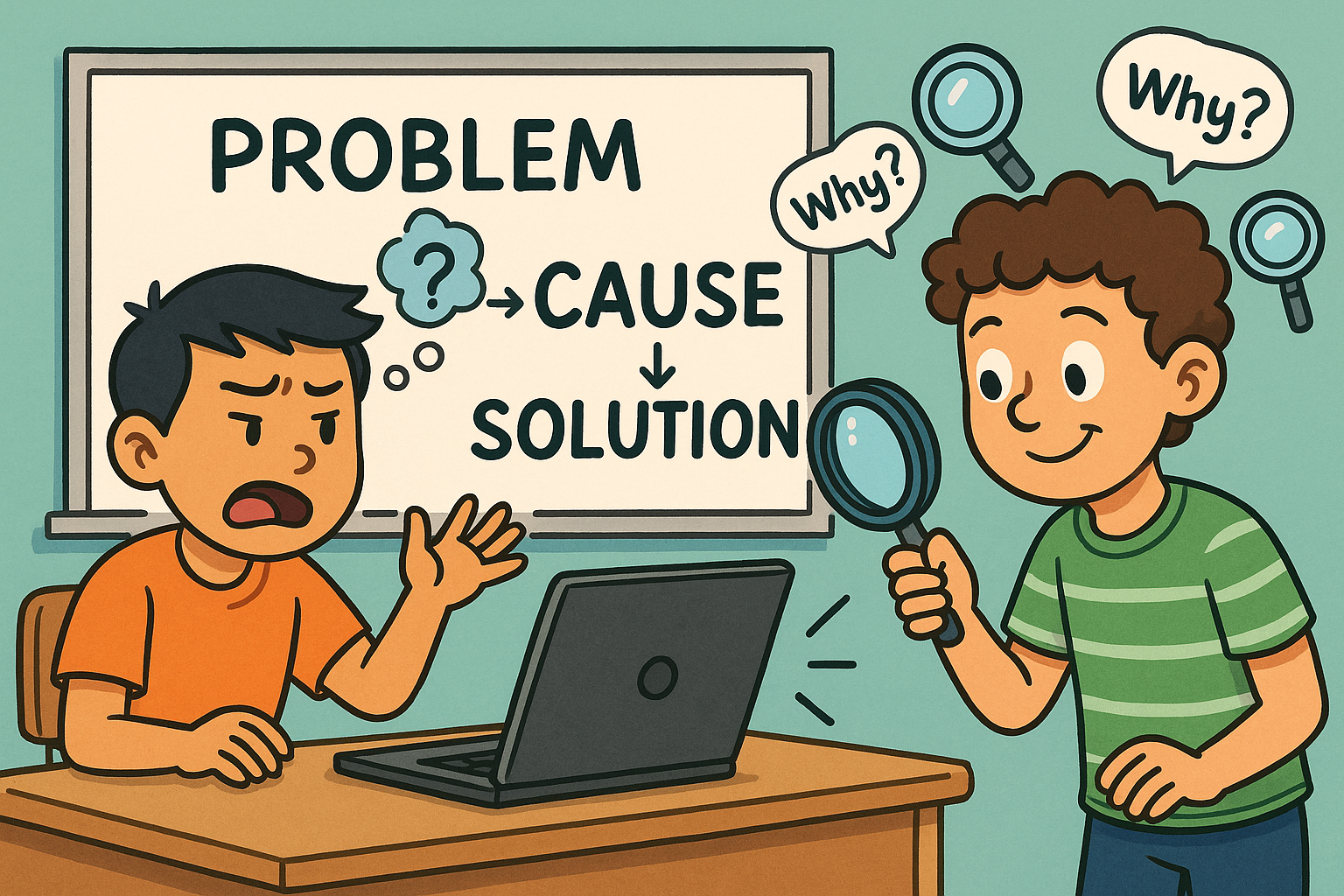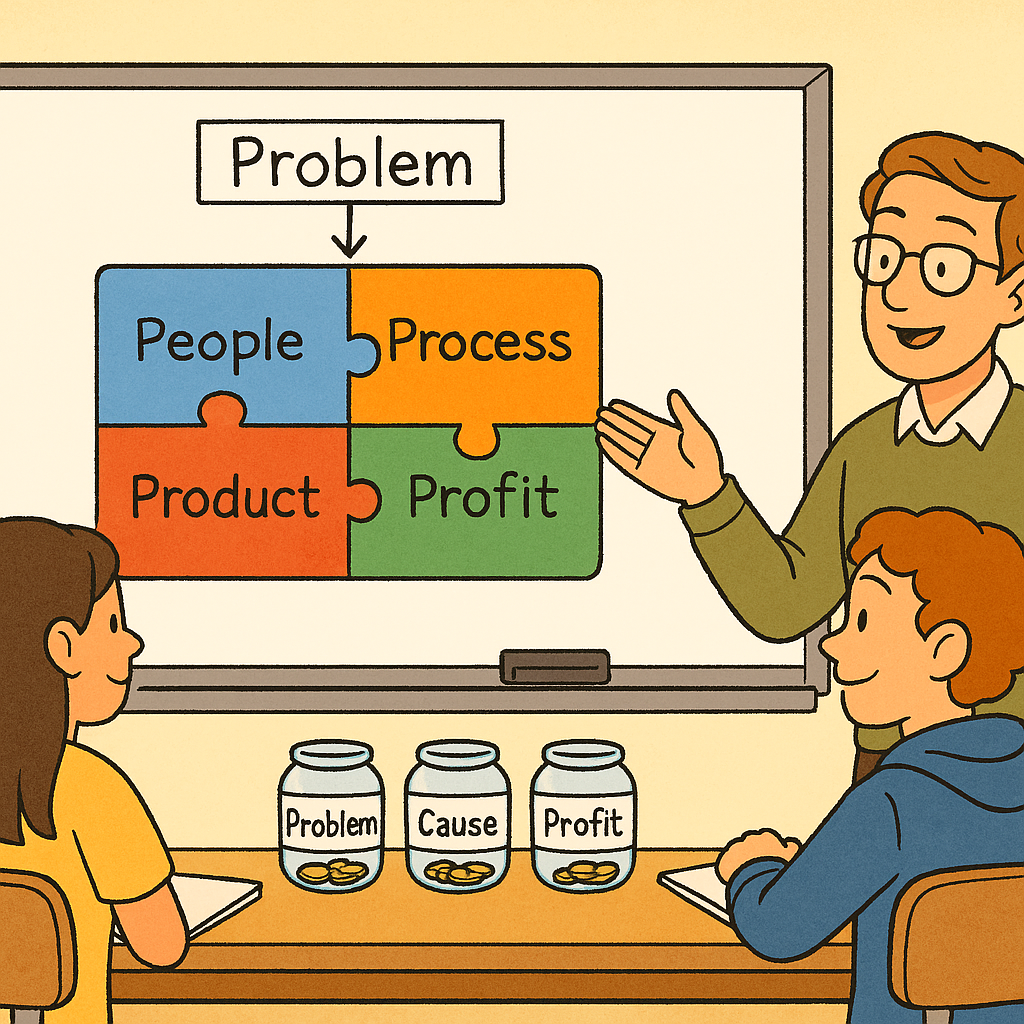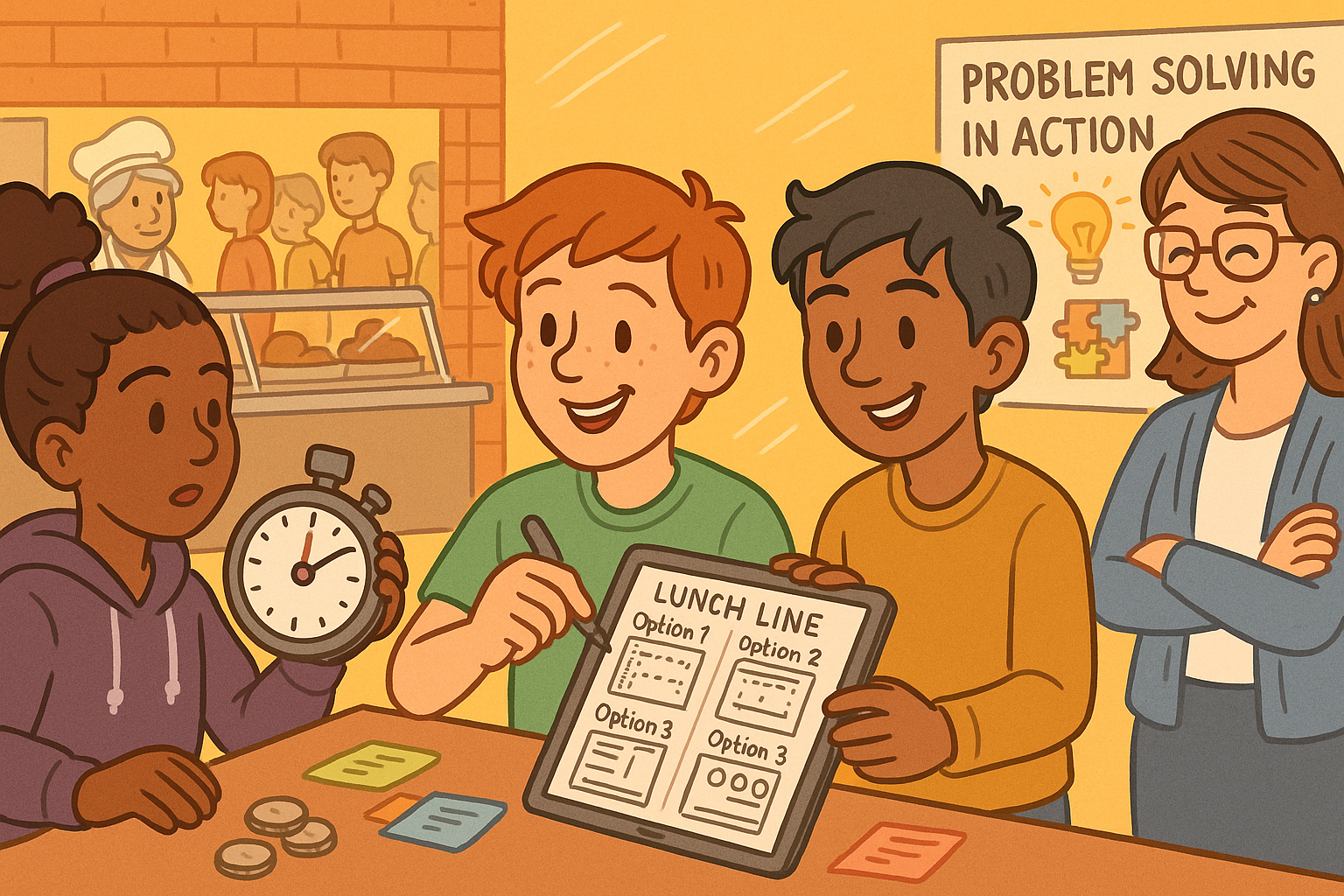🧩 Problem Solving & Critical Thinking
Every great business — from Apple to Airbnb — started with a problem.
The difference is, some people complain, and others solve.
Critical thinking means asking questions, not taking everything at face value.
Problem solving means finding patterns, not random answers.
🎯 Why This Matters
Business isn’t about memorizing formulas — it’s about fixing what’s broken and improving what already works.
When you master problem-solving, you stop being a “worker” and start thinking like a builder.
💬 “Every complaint hides a business idea.”
🧠 The Problem-Solving Mindset
There are two kinds of thinkers:
| Type | Focus | Example |
|---|---|---|
| Reactive Thinker | “This doesn’t work!” | “The app is slow.” |
| Critical Thinker | “Why doesn’t it work?” | “Maybe the images are too big, or the server is overloaded.” |
One complains. The other investigates.
Which one builds the next startup?

Great problem solvers don’t complain — they analyze. Asking “Why?” turns frustration into insight.
🧩 Step 1 — Identify the Right Problem
Many people waste effort solving the wrong problem.
Example:
A school club has low attendance.
They decide to design better posters.
But the real reason?
Meetings are too long and boring.
Before fixing something, ask:
“What’s really causing this?”
Use the 5 Whys Method:
- Why aren’t students coming? → They’re busy.
- Why are they busy? → They have homework.
- Why don’t they plan ahead? → They don’t see value in the club.
- Why not? → The topics aren’t interesting.
- Why aren’t they? → We never asked what they want!
🎯 Problem found: poor topic alignment, not bad posters.
🧩 Step 2 — Break It Down
Big problems feel scary — until you split them into parts.
| Example | Break It Down |
|---|---|
| “Our app is failing.” | 1. Too few users? 2. Poor design? 3. Marketing? 4. Bugs? |
| “We’re losing money.” | 1. Sales too low? 2. Costs too high? 3. Wrong pricing? |
Each part is smaller, clearer, and easier to fix.
💬 “You can’t fix what you don’t define.”

Breaking a big problem into smaller areas — People, Process, Product, and Profit — helps make solutions clearer and more manageable.
💡 Step 3 — Analyze the Root Cause
Sometimes the visible issue is only the symptom.
Critical thinkers dig deeper — they separate facts from opinions.
| Observation | Possible Cause | Evidence |
|---|---|---|
| Sales dropped | New competitor | Ads mention same slogan |
| Customers leave early | Long waiting time | Checkout logs show delays |
| App crashes | Memory overload | Reports from Android users only |
By connecting data with reasons, you get truth — not guesses.
⚙️ Step 4 — Generate Options
Don’t stop at one idea — explore three levels:
- Safe fix — quick, low effort.
- Creative fix — different angle, moderate risk.
- Bold fix — new approach, high impact.
Example:
Your café’s coffee is too bitter.
- Safe: Adjust recipe.
- Creative: Offer milk blends.
- Bold: Launch “choose your flavor” system.
Innovation starts when you test new paths.

Brainstorming solutions in levels — Safe, Creative, and Bold — helps you balance risk with imagination and pick the right strategy.
🔍 Step 5 — Test & Learn
Great problem solvers don’t aim for perfection — they experiment.
They act like scientists:
Hypothesis → Test → Observe → Improve.
Example:
Your event doesn’t attract people?
Try changing the time.
If more people come, you’ve learned something.
If not — you’ve learned something else.
Either way, you win.
💬 Case Study: The School Lunch Line
Problem: The lunch line is always too long.
Students complain daily.
A group of students decided to test solutions:
- Option 1: Add a second server.
- Option 2: Offer pre-orders.
- Option 3: Change layout for faster flow.
After observing for one week, the best result came from layout change — same staff, faster process.
That’s critical thinking in action.

Testing ideas in action — measuring, observing, and improving turns simple observations into real solutions.
🔬 Common Thinking Traps
- Confirmation bias — looking only for evidence that supports your opinion.
- Assumption trap — believing something “just because everyone says so.”
- Overcomplication — adding too many steps instead of simplifying.
- Blame loop — focusing on who’s wrong, not what’s wrong.
Avoid them by asking:
“What proof do I have?”
“What’s another explanation?”
“Am I solving or defending?”
🧠 Develop a Critical Eye
Critical thinking isn’t criticism — it’s clarity.
It’s the ability to pause before reacting and say:
“Interesting. Let’s test that.”
When you do that, you become a rare kind of thinker —
the one who sees solutions where others see obstacles.
🧩 Mini Exercise
Pick a problem from your life — digital, personal, or school-related.
- Write one sentence describing it.
- Ask “Why?” five times.
- Brainstorm 3 fixes (safe, creative, bold).
- Share your favorite idea with a friend.
That’s your first “problem-solving prototype.”
🌍 Real-World Examples
- Netflix saw people cancel DVDs → built streaming.
- Dyson saw vacuums lose suction → built a bagless model.
- Lego saw kids move to screens → launched digital building games.
They all followed the same pattern: See → Question → Create.
🧩 Your Critical Thinking Habit
Start simple:
- Read with curiosity.
- Question numbers you see online.
- When someone says “always” or “never” — test it.
Over time, your mind becomes a filter for truth and opportunity.
💬 Remember:
Problem solvers don’t wait for permission.
They start small, think deep, and keep improving — one “why” at a time.
📝 Try this today
Write down three everyday annoyances (at school, home, or online). Which ones could become opportunities for improvement?
Pick one issue and use the '5 Whys' method — ask 'Why?' five times to reach the real cause.
Sketch three possible ways to solve your problem. Label them as 'safe', 'creative', and 'bold'.
Lesson Progress
Module: acumen · +0% upon completion